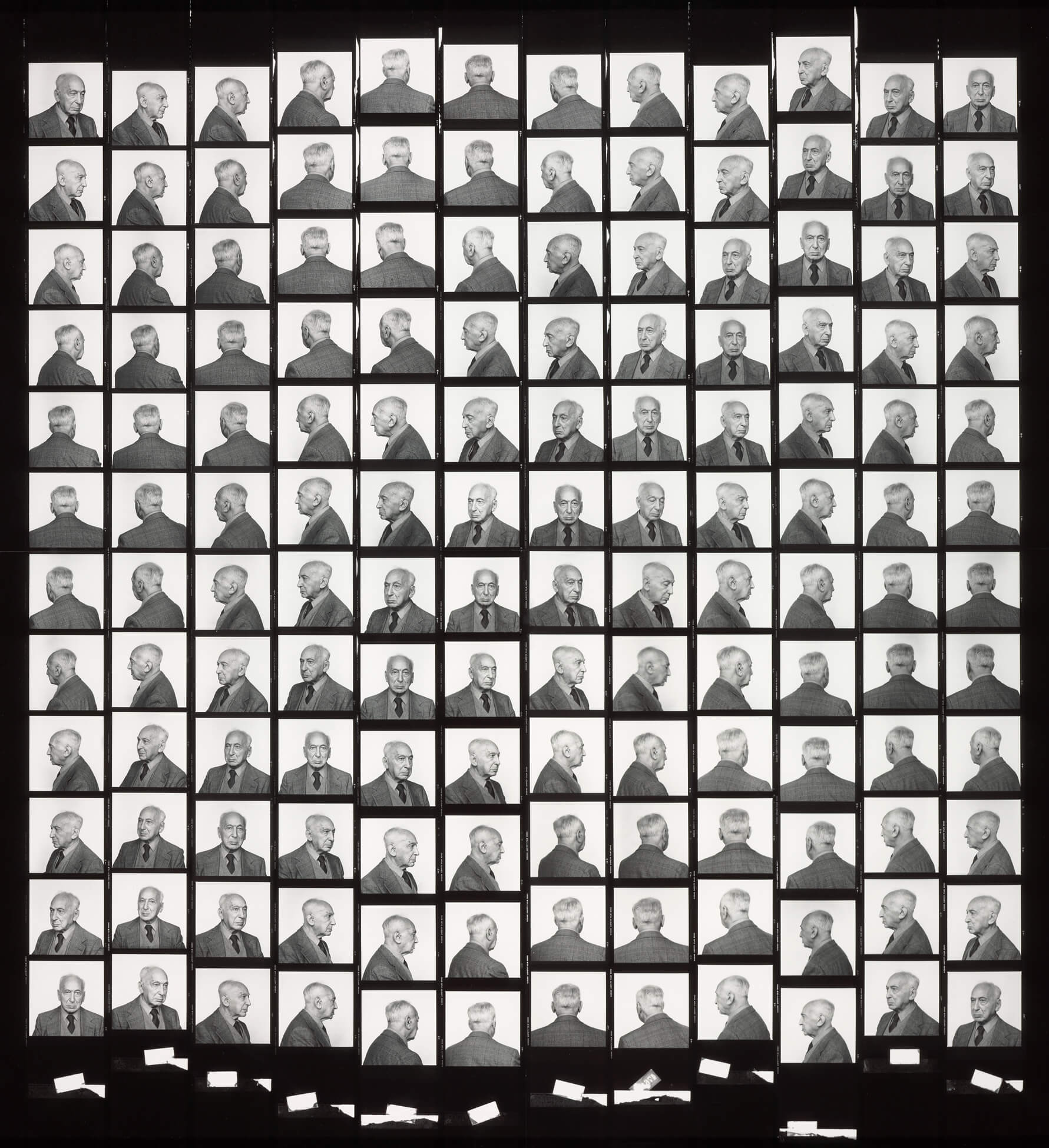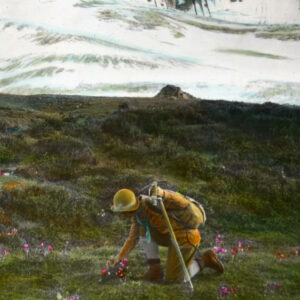Arnaud Maggs (1926, Montreal–2012, Toronto)

André Kertész, 144 Views, December 8, 1980
Four gelatin silver prints, 86.9 x 79.9 cm
National Gallery of Canada, Ottawa
In 1980, Arnaud Maggs (1926–2012) made an artwork featuring the celebrated Hungarian photographer André Kertész (1894–1985). Maggs’s elegant arrangement of 144 views shows the eighty-six-year-old’s head and shoulders gradually turning from front to back. Maggs’s poetic display beautifully echoes Kertész’s own interest in movement and gesture and is characteristic of the early large-scale portrait installations that launched his art career.
-
Arnaud Maggs, 64 Portrait Studies, 1976–78 (detail), 1976–78
Gelatin silver prints, 40.4 x 40.4 cm each; image: 37.9 x 38.2 cm each
CMCP Collection, National Gallery of Canada, Ottawa
-
Arnaud Maggs, 64 Portrait Studies, 1976–78 (detail), 1976–78
Gelatin silver prints, 40.4 x 40.4 cm each; image: 37.9 x 38.2 cm each
CMCP Collection, National Gallery of Canada, Ottawa
-
Arnaud Maggs, 64 Portrait Studies, 1976–78 (detail), 1976–78
Gelatin silver prints, 40.4 x 40.4 cm each; image: 37.9 x 38.2 cm each
CMCP Collection, National Gallery of Canada, Ottawa
This image depicts an installation view of Maggs’s 64 Portrait Studies, 1976–78, at David Mirvish Gallery, Toronto, 1978, photographer unknown.
-
Arnaud Maggs, Joseph Beuys, Frontal and Profile Views, 1980, printed c.1980
Two gelatin silver prints, 44.4 x 44.4 cm each
Stephen Bulger Gallery, Toronto
-
Arnaud Maggs, The Complete Prestige 12″ Jazz Catalogue, 1988
828 azo dye prints (Cibachrome), 20.3 x 25.4 cm each; installation: 400.1 x 1053.5 cm
National Gallery of Canada, Ottawa
Maggs’s The Complete Prestige 12″ Jazz Catalogue is shown here in an installation view at The Power Plant, Toronto, in 1999, photograph by Gabor Szilasi.
Based in Toronto, Maggs was successful as a graphic designer and commercial photographer before he began working as an artist in the 1970s. Initially, he concentrated on portraiture. Works such as 64 Portrait Studies, 1976–78, explore his dual interests in analytical systems and human faces. Four rows of sixteen black and white images invite viewers to compare facial features, head shape, posture, and hairstyles.
Influenced by both his professional background and Conceptual art, he turned to the grid as a mode of presentation. By installing a series of photographs in the form of a grid, he established order and introduced duration by inviting viewers to compare images and consider changes in his subjects over time. In works such as 48 Views, 1981–82, Maggs paid homage to artists, photographers, and other cultural figures, including Jane Jacobs, Yousuf Karsh (1908–2002), Michael Snow (1928–2023), and Paul Wong (b.1954). In Joseph Beuys: 100 Profile Views, 1980, and Joseph Beuys: 100 Frontal Views, 1980, the penetrating gaze of the acclaimed German conceptual artist combines with subtle changes in posture to convey the essence of the subject.
In the late 1980s, Maggs began to explore his interest in collections and taxonomies through material culture. In The Complete Prestige 12” Jazz Catalogue, 1988, he represented the numeric system that Prestige Records used to catalogue their jazz releases. He also worked with typography and signage, before turning to ephemera and archival sources in the 1990s. Maggs received the Scotiabank Photography Award in 2012.

 About the Authors
About the Authors
 More Online Art Books
More Online Art Books
 Acknowledgements
Acknowledgements